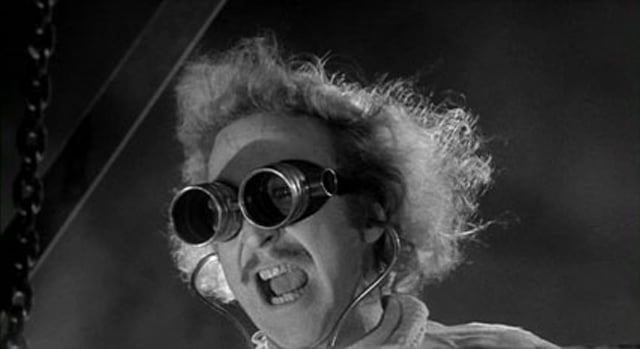D&D: Five Ways To Do A Character Voice – No Accent Required

Can’t do an accent to save your life? Well no worries friend, you can still have an excellent character voice–here are five quick tricks you can try.
“Our table doesn’t ‘do voices'” is a common lament these days, with many DMs and players looking at streamed shows like Critical Role, where a bunch of professional voice actors play D&D and have incredible character voices, or indeed create life whole cloth with just a little bit of vocal variety.
But even if you’re not a voice actor, you can still give your character life with a voice of their own. There’s a perception that you have to either “be good” at voices or that you have to be able to do one of two voices: received pronunciation or cockney (if you’re playing a lower class character). But we’re here today to give you some tips you can practice right away to give your character a voice.
Practice these tips often enough and you’ll be surprised at the variety and range you’re capable of. Anyone can do it, you just have to take some time to do it poorly before you do it well. Let’s try them out!
Catchphrases And Sayings
Let’s clarify what we mean by catchphrases here real quick. I’m not saying you should get all ‘where’s the beef’ or ‘I know NOTHINK!’ with what you say–but with a little bit of work you can come up with some turns of phrase that sound memorable. Conan is always doing things, by Crom! Paladins out of Warcraft will do things ‘For Lothar!’
It doesn’t take much more than that to start grounding your character in the world of your game. Think about things your character might say often–oaths they might swear when it’s stressful, or a battlecry. The other side of this are sayings and turns of phrase. Does your character have some homespun wisdom to share, like ‘a sword in the back hurts the worse’ to talk about betrayal, or ‘you can’t catch aurochs without some oats’ to talk about how you approach a situation.
So try coming up with a few different phrases your character might say on occasion, and write them down. Then just say them out loud a few different ways to see what works for your character, and you’ve already done most of the work.
Impersonate An Impersonation
This is an old theatre trick. If you want to come up with a voice, try impersonating something you’ve already heard as best you can. The point isn’t to do a pitch perfect impersonation of a celebrity, but rather to try and get yourself out of your head and giving yourself little verbal touchstones to go back to when you feel yourself getting lost.
Johnny Depp famously impersonated Keith Richards until he became a pirate king, Ren out of Ren & Stimpy is an exaggerated version of Peter Lorre–but you don’t really pick up on that until you’re well into it. The voices became more than just an impersonation.
To practice this one: pick a character whose voice you know well and do your best impersonation, then do your worst impersonation and see what feels like the kind of voice you want. If you wrote catchphrases down from the tip above, you already even have some lines to say.
VOLume And Pitch And Rhythm
This is all about playing with the physical qualities of your own voice. You can, right now, speak a little slower or a little softer or a little deeper, and your voice will sound different. You might not be used to talking that way, but sometimes the difference between one character and another is just “how deep they talk” or that “this one talks fast and a little high pitched” and it’s enough. Especially if you’re just doing voices at your table, you don’t really need much to get the idea that ‘this is a different character’ across.
If you want to practice this one: try speaking just a note or two higher than you normally do. Now try a little lower than you normally do. See what voice fits with your character. Do they speak fast or slow? Do they have a loud BOOMING VOICE LIKE BRIAN BLESSED or do they speak subtly but intensely. Try these on for size and see what clicks.
Archetype
Archetypes are another great way to start thinking about how your character talks. No character is completely original, whether you’re playing a character you’ve spent five hours developing or whether you just wrote ‘Wruce Bayne’ where it says character name and have been Batmanning your way through the last five levels, proving that you are justice, you are the night–it doesn’t matter. Every character has a ‘type’ you can play to–well-rounded characters might have more. But hey baby steps here, it’s more important to start with something broad that you can keep in your head.
Think about the types of people you know or common characters. What are their types? A nerdy character sounds different from a femme fatale who sounds different from a girl next door. But you know how each of those characters sounds. How do they talk–is it with an authoritative voice, are they sultry? Whatever the answer, your interpretation is the one that will make your character voice sound unique, but recognizable at the same time.
To practice this one, come up with a few different archetypes and talk like you think they’d talk (bonus points if you say something your cahracter would say). Here are a few to get started: nerd, bad boy, femme fatale, doctor, burly brawler, gentleman thief, nosy neighbor, fraidy-cat.
Emotion
That last archetype is also, conveniently enough, another great way to start building a character voice. A strong emotion is another great way to find a character voice. Is your character generally angry? Are they happy? Are they scared all the time? Are they a sad sack? Even if you’re not using an emotion all the time, thinking about how your character sounds when they’re mad or finding humor in the situation can help give your characters, character.
To practice this, just imagine your character is experiencing a very strong emotion: joy, anger, fear, sadness, surprise, disgust, adulation, love, lust, shyness–and see how you can convey that idea.
Bonus: Confidence
Whatever you decide, the real secret is to do it confidently. If you’re confident in what you’re doing, other people will pick up on it. That’s why there are options to practice these tricks, so you can do them in the safety of your own car/shower/special closet where you go when you’re just feeling it sometimes and get it wrong before you get it right.
How do you convey character at your table? Let us know in the comments!











